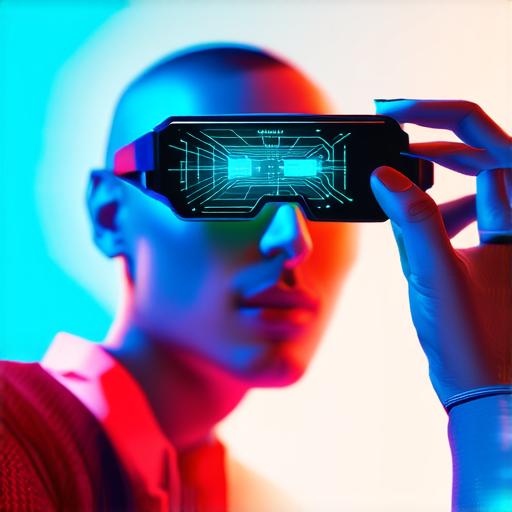Introduction
Augmented reality (AR) is a technology that overlays digital information onto the real world. This digital information can be in the form of graphics, sounds, and even interactive experiences.
This article will delve into the world of augmented reality, exploring its definition, history, and potential use cases.

What is Augmented Reality?
At its core, AR is a technology that enhances or “augments” the real-world environment with digital elements. This is achieved through the use of sensors, cameras, and other devices that track the user’s location and orientation in the physical world.
Once this information is gathered, it is processed by an AR engine, which overlays digital content onto the real-time camera feed.
AR can be experienced through a variety of devices, including smartphones, tablets, headsets, and even wearable technology such as smart glasses. The most common form of AR is through the use of mobile applications that utilize the device’s camera to overlay digital elements onto the real world.
History of Augmented Reality
The concept of augmented reality can be traced back to the early days of computing, with pioneers such as Ivan Sutherland and Jaron Lanier exploring the potential for computer-generated graphics to be overlaid onto the real world. However, it wasn’t until the advent of smartphones and other mobile devices that AR truly began to take off.
In recent years, there has been a surge in investment in AR technology, with companies such as Apple, Google, and Microsoft all exploring the potential for AR applications. This has led to the development of a variety of innovative use cases, from gaming and entertainment to education and healthcare.
Potential Use Cases for Augmented Reality
The potential applications for augmented reality are virtually limitless. Here are just a few examples:
Gaming and Entertainment
AR has the potential to revolutionize the gaming industry, allowing players to experience immersive, interactive environments in a whole new way. For example, AR games can be played in the real world, with players using their mobile devices to interact with digital elements in their surroundings.
Education
AR can be used as a tool for education, allowing students to explore and interact with complex concepts in a more engaging and interactive way. For example, AR can be used to create virtual field trips, allowing students to explore historical sites or natural wonders without leaving the classroom.
Healthcare
AR has the potential to revolutionize healthcare by providing doctors and patients with real-time, accurate information about medical conditions and treatments. For example, AR can be used to overlay digital images onto a patient’s body, allowing doctors to visualize internal organs and diagnose conditions more accurately.
Retail
AR can be used in the retail industry to enhance the shopping experience, allowing customers to try on clothes virtually or explore products in 3D before making a purchase.
Manufacturing
AR can be used in the manufacturing industry to improve efficiency and accuracy by providing real-time information about production processes and allowing workers to visualize complex designs and components in 3D.
FAQs
What is augmented reality?
AR is a technology that overlays digital information onto the real world.
How does augmented reality work?
AR works by using sensors, cameras, and other devices to track the user’s location and orientation in the physical world.
